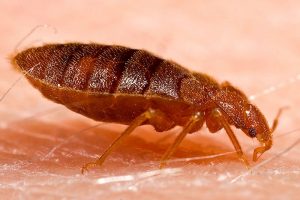 Bed bug infestations are an increasing problem across North America. If you fear you have an infestation or have been exposed to one, you are not alone, and there are solutions. It"s important to first identify if you indeed have bed bugs, or possibly another type of parasite such as fleas. Once you confirm you have bed bugs, you might wonder how you were exposed or if they are a health risk, but most importantly, you need to know what steps you should take to get rid of them, and how you can prevent their return. With help and the proper information, you can identify and eliminate bed bugs from your home or work environment.
Bed bug infestations are an increasing problem across North America. If you fear you have an infestation or have been exposed to one, you are not alone, and there are solutions. It"s important to first identify if you indeed have bed bugs, or possibly another type of parasite such as fleas. Once you confirm you have bed bugs, you might wonder how you were exposed or if they are a health risk, but most importantly, you need to know what steps you should take to get rid of them, and how you can prevent their return. With help and the proper information, you can identify and eliminate bed bugs from your home or work environment.Monday, July 9, 2018
Identifying, Treating, and Preventing Bed Bug Infestations
 Bed bug infestations are an increasing problem across North America. If you fear you have an infestation or have been exposed to one, you are not alone, and there are solutions. It"s important to first identify if you indeed have bed bugs, or possibly another type of parasite such as fleas. Once you confirm you have bed bugs, you might wonder how you were exposed or if they are a health risk, but most importantly, you need to know what steps you should take to get rid of them, and how you can prevent their return. With help and the proper information, you can identify and eliminate bed bugs from your home or work environment.
Bed bug infestations are an increasing problem across North America. If you fear you have an infestation or have been exposed to one, you are not alone, and there are solutions. It"s important to first identify if you indeed have bed bugs, or possibly another type of parasite such as fleas. Once you confirm you have bed bugs, you might wonder how you were exposed or if they are a health risk, but most importantly, you need to know what steps you should take to get rid of them, and how you can prevent their return. With help and the proper information, you can identify and eliminate bed bugs from your home or work environment.Friday, April 27, 2018
How Can I Protect My Family from SFTS and Other Tick Borne Illnesses?
 Ticks spread a number of serious illnesses. In the news there have been reports of SFTS, which is spread by the East Asian Tick that was recently introduce to United States. Currently, this tick is only found in the New Jersey area, and it is not in the Arlington area. However, the tick is expected to spread throughout the United States since it is extremely invasive. The experts are predicting a record tick season in Virginia, which increases your chances of contracting an illness from a tick. There are things that you can do to protect your family from SFTS and other tick-borne illnesses.
Ticks spread a number of serious illnesses. In the news there have been reports of SFTS, which is spread by the East Asian Tick that was recently introduce to United States. Currently, this tick is only found in the New Jersey area, and it is not in the Arlington area. However, the tick is expected to spread throughout the United States since it is extremely invasive. The experts are predicting a record tick season in Virginia, which increases your chances of contracting an illness from a tick. There are things that you can do to protect your family from SFTS and other tick-borne illnesses.Protect Your Yard
One of the best ways to protect your family is to have a tick treatment applied to your yard. This will kill the ticks that are there and also creates a barrier around your yard that will stop ticks from wandering in. Getting rid of any leaf litter in your yard also helps, as does keeping your lawn short.
Dress Appropriately
When you go into areas that are prone to ticks, it is important to dress appropriately. You can do this by wearing long sleeves and long pants. When you tuck your shirt in and your pants into your socks, you give the ticks fewer places that they can come into contact with your skin. Once you leave an area that has ticks, you should check your clothing, because you may be able to brush off any ticks that are on your clothing before they have the chance to attach.
Wear Insect Repellent
Insect repellent is very good at stopping ticks from biting you. DEET is the most effective treatment for ticks. It comes in a number of different strengths. Once your child is two months old, it is safe to use insect repellent up to 25% DEET. If you are older, you can use 40% or higher if you know you will be spending an extended period of time in area with ticks. Be sure to reapply according the package directions.
Check for Ticks
It is important to regularly check for ticks. You should check under your arms, between your legs and behind your knees for ticks. You should also check around your hairline and in your ears. The sooner you find and remove a tick the better. This is because the ticks spread the disease when the regurgitate. If you find a tick, remove it with a pair of tweezers by pulling straight back. Never using gasoline, rubbing alcohol or Vaseline because this will cause the tick to regurgitate into your skin and it will increase the chances of you getting sick.
Resources
http://www.pestcontrol10.com/EcoTek-Termite-and-Pest-Control-271-93.htm
http://www.pestcontrol10.com/EcoTek-Termite-and-Pest-Control-of-Manassas-305-118.htm
http://www.pestcontrol10.com/EcoTek-Termite-and-Pest-Control-of-Northern-Virginia-306-118.htm
https://classic.penzu.com/p/17f94f87
http://feeds.feedburner.com/EcotekTermiteAndPestControl
http://feeds.feedburner.com/EcotekTermitePestControlManassas
http://feeds.feedburner.com/EcotekTermitePestControlNOVA
What Is the East Asian Tick?

The East Asian tick is a tick that is mostly brown in color. It is a tick that is considered very invasive, meaning it can quickly establish itself in an area. It is able to reproduce asexually. These ticks are often found in large numbers and can be very difficult to completely eliminate.
How Did the East Asian Tick Get to the United States?
No one is sure how the East Asian tick came to the United States. It was first found this fall in new Jersey. The officials there tried to eradicate it but were unable to. They just determined that is firmly established in New Jersey. It has not been identified in other areas of the United States including the Virginia Beach area. However, no one is sure how long it will take for the tick to spread outside of New Jersey.
Why Are People Worried About the East Asian Tick?
One of the reasons people are concerned about this tick is it is a known carrier of STFS, which is a serious illness. The ticks can also transmit other illnesses such as including Japanese spotted fever. They are often spotted around farm animals, but can also attach themselves to other animals including deer.
Should I Worry About Other Ticks Too?
The wet winter means that there should be a large tick population this year. Although the East Asian tick has not been identified in Virginia Beach yet, a number of other ticks have. These ticks also carry illnesses that can make you, your family or your pets very sick. These illnesses include Rocky Mountain spotted fever, Stair and Lyme disease. Ticks can bite throughout the year and the small ticks, also called seed ticks, are very prevalent in the spring.
What Steps Can I Take to Stop Tick Bites?
There are steps you can take to protect yourself from tick bites. The first is to treat your yard for ticks. This allows you to enjoy your time outside without worrying about being bitten. Be sure to check for ticks often, especially after visiting a tick-prone area. You can wear insect repellent with DEET in it to reduce the chances of being bitten. Dressing in love sleeves and long pants can help. If you tuck your pants into your socks and your shirt into your pants, you lower the chance of being bitten. If you find a tick, you should remove it with tweezers and then flush it down the toilet or wrap it in tape.
Additional Articles
http://ecotektermpestontrolmanassas.jigsy.com/entries/general/the-different-types-of-pest-control
https://pestcontrolofvirginiabeach.blogspot.com/2018/06/pest-control-reasons-you-need-to.html
https://ecotektermiteandpestcontrolofvirginiabeach.wordpress.com/2018/06/08/pest-control-that-gets-the-bugs-out/
https://ecotekpestcontrolofvirginia.tumblr.com/post/174684155609/learn-the-importance-of-experience-in-performing
https://ecotekpestcontrolo.wixsite.com/mysite/home/keeping-home-safe-while-doing-pest-control
http://ecotekpestcontrolofvirginia.webstarts.com/blog/post/pest-control-dealing-with-a-squirrel-infestation
http://ecotektermiteandpestcontrolofvirginiabeach.bravesites.com/entries/general/why-is-it-necessary-to-opt-for-a-pest-control-service-
How Likely Am I to be Bitten by the East Asian Tick in Manassas?

There have recent reports about the East Asian tick in the news. This tick has just been identified as establishing itself in the United States. This tick species is considered extremely invasive and it is hard to eradicate. At this time the East Asian tick has only been found in New Jersey, so it is unlikely that you will be bitten by this tick in Manassas. However, it will likely spread and it is something that you should be aware of in the upcoming years.
Can Ticks Make Me Sick?
The East Asian tick is a known carrier of the SFTS virus which has not been found in the United States. This virus causes people to become quite ill. Since it is a virus there is not a known treatment, instead doctors will try to manage the symptoms and help you recover. There is a mortality rate of about twelve percent. There are other tick-borne illnesses in the United states including STARI, Rocky Mount spotted fever and Lyme disease. However, these can be treated with antibiotics and cured if caught early enough.
What Areas Are Prone to Ticks?
Experts have predicted a very active 2018 tick season. This means that you should be aware of any areas that may have ticks. They tend to like areas with leaf litter, areas with tall grass or bushes or the woods. You may be more likely to pick up a tick when camping or hunting, but they can be found in your backyard or at your city park too.
How Do I Check for Ticks?
It is important to check for ticks on a regular basis. You should check your clothing as soon as you leave a tick prone area. You may be able to brush the ticks off and avoid bringing them home for you. Once you arrive home, you should change your clothes and check behind your knees, under your arms and between your legs. They also like to attach themselves around your hairline or in your ears.
What Do I Do If I Find a Tick?
You should only remove the tick with tweezers by pulling straight back. Do not twist the tick to make it come loose, because it can leave its head embedded in your skin which can cause an infection. Once the tick is detached, you should dispose of it properly. You should not crush it with your hands because this increase the chances of you contracting an illness. If you start to develop signs of a tick-borne illness which usually includes a fever, you should seek medical attention and tell your doctor you were bitten by a tick. Most importantly you should take precautions by eliminating ticks in your yard through a professional tick control treatment.
What Danger Does the East Asian Tick Pose to People in North Carolina?
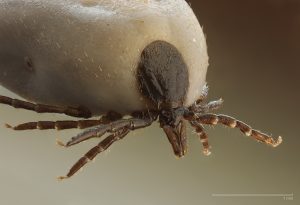
The East Asian tick has been on the news because it has been found in the United States. This tick is originally from Asia. It is recognized as a highly invasive species. It multiplies rapidly. It can reproduce asexually. When the East Asian tick is found, it is usually found in large numbers. There has been a case reported where enough ticks attached to one cow that they drained the cow until it died.
Should I Be Concerned About the East Asian Tick?
The main concern at this time is that the tick will spread throughout the United States. Currently, it is not in North Carolina, but officials are not sure how quickly it will spread. It does not respond well to attempts to contain it so the chances are that it will eventually reach North Carolina. The major concern is that the East Asian tick carries SFTS, which is a dangerous virus. There is no known treatment for the virus, instead doctors will manage the symptoms as the patients go through the course of the illness.
How Do I Identify Different Types of Ticks?
It can be difficult to identify the different types of ticks. The East Asian tick is brown and does not have spots or patterns on the back. However, this is similar to other ticks. The best option is to take the tick to the doctor or to your agricultural department to have it identified. Once you remove the tick, you should place it on a cotton ball with rubbing alcohol and seal it in a zipper bag. The experts can look at the tick and determine what it is. If you find a tick that you have not seen before, you should have it checked out.
What Can I Do to Prevent Tick Bites?
There are a number of things you can do to prevent tick bites. When you are going into an area that has a lot of ticks, you should wear insect repellent with DEET. Wearing long sleeves and long pants can help too. You can treat your yard for ticks, and if you are worried about your children being bitten or if you live near woods, this is a good option. The tick season is expected to be record breaking with a large outbreak in North Carolina, so make sure you have professionals treat your yard for ticks. There are already several types of ticks in the area that can spread diseases, and you should be protecting your family from them.
Additional Articles
https://ecotektermite-1.atavist.com/pest-control-how-to-reduce-pests-in-your-lawn-or-home
http://ecotekpestcontrolofvirginia.jigsy.com/entries/general/effective-pest-control-solutions-for-your-home
http://ecotektermiteandpestcontrolofvirginia.blogspot.com/2018/06/pest-control-tips-for-homeowner.html
https://ecotektermiteandpestcontrolofnorthernvirginia.wordpress.com/2018/06/08/pest-control-how-to-choose-a-company/
https://ecotektermiteandpestcontrolus.tumblr.com/post/174688722891/pest-control-problems-solved
https://ecotekpestcontrolo1.wixsite.com/mysite/home/a-top-quality-pest-control-service-is-worth-its-weight-in-gold
http://ecotektermiteandpestcontrol.webstarts.com/blog/post/5-important-pest-prevention-steps
http://ecotekpestcontrolofnvirginia.bravesites.com/entries/general/how-to-control-pest-in-your-garden-in-an-organic-way
https://ecotektermite-2.atavist.com/a-pest-control-professional-can-make-you-feel-good-about-your-home-again
http://ecotekpestcontrolofnvirginia.jigsy.com/entries/general/being-wise-in-lawn-care-having-an-impact-on-successful-pest-control
Monday, April 23, 2018
How to Get Rid Of Fleas in Your Clothes
 https://www.flickr.com/photos/magnus_d/5192866091
https://www.flickr.com/photos/magnus_d/5192866091More and more people today are keeping pets for comfort and companionship. However, pets also cause people to have to face many problems. One of the most annoying issues that most people have to deal with is fleas. Fleas can appear in every corner of the house such as in carpets, in beds, on your cats and dogs and on your clothes. Today, we will focus on treating fleas on your clothes.
Detect Problems
To eradicate fleas in your clothes in the most effective way, it is advised that you should find and detect the original cause of the flea infestation. First, you should check your pets as a flea infestation usually originates with them. If the cause of fleas in your clothes is your pets, you will need to give your pets some treatments to get rid of their fleas. This could be bathing them in flea shampoo and applying flea collars.
After detecting and treating the fleas on your pets, if any, you should remove them from the area for a while before implementing the next steps. This is because fleas can jump over a long distance, thus if you do not remove your pets, they may jump straight back onto your pets, making all your hard work for nothing. Then, check your wardrobe, your carpets and rugs to find the things that have fleas on. You can now take steps to eradicate them.
Steps for Removal
If you find out that the fleas are in your clothes, the following steps would enable you to eradicate them effectively. Firstly, make sure you put all infested clothing into a sturdy plastic bag and seal it up. This step will prevent you from spreading fleas while you are transporting your clothes to the washing machine or laundry facility.
You can now use a vacuum cleaner to eradicate any fleas’ eggs that are left. You should vacuum your carpets, floors, bed, and wardrobe thoroughly. Steam cleaning these things would be even more effective, as fleas will not survive the high temperatures. Wash all your clothes at the highest temperature your washing machine can reach. Once they’re dry, iron them thoroughly to kill any remaining flea eggs.
Once all this has been done, use some natural flea control products to prevent the fleas coming back again. This may be cedar wood blocks in your wardrobe or sprinkling it with essential oil such as lavender or tea tree oil.
Finally, keep your clothes in a dry place as this can prevent a re-infestation. Fleas like to live and breed in dark, humid places. It’s important to make sure that your house is always kept in a clean, tidy and sanitary condition.
Prevention
“An ounce of prevention is worth a pound of cure” is a wise old saying. It is necessary to take some preventative steps after removing existing fleas on your pets and in your home. Here are a few tips to help you.
Vacuuming daily

It is important to vacuum your entire house daily. Because one female flea can lay up to fifty eggs a day, vacuuming daily is the best prevention method to protect your pets and your home.
Wash and launder regularly
Do not leave your dirty clothes for more than three days before washing them. This will prevent fleas maturing and laying eggs on your clothes. Fleas prefer humid, dark and dirty places, which sounds just like a laundry basket! Thus, always do your laundry regularly
Use natural flea products
All the above-mentioned methods can help protect you from fleas. However, you should take the additional step of using natural flea products. This is one of the most effective prevention and treatment methods for fleas. One suggestion is cedar oil products, which can be sprayed onto your pets or around the yard and house. Another is to plant rosemary or lavender plants in pots around the outside of the house.
I hope that all the above steps can help you confront the problem of fleas in your clothes. You can find more flea treatments on this website.
Monday, April 16, 2018
5 Dangers of Wildlife on Your Property

Wildlife is a common occurrence in rural areas, and it is even common to see some wildlife in cities. You may be dealing with raccoons, moles, squirrels, deer and even foxes. While wildlife is common and an important part of nature, it is not necessarily a good idea to have a lot of wildlife on your property. There are dangers that wildlife can carry, and you may need to have some of the wildlife trapped and removed from your property or set up fences to keep it out of your home. Here are five dangers of wildlife on your property.
Danger to Your Pets
Wildlife can be a danger to your pets. If the wildlife has contracted rabies and is behaving erratically, it may be more likely to attack your pets. Some wildlife like coyotes may prove dangerous to your small dogs or cats. Raccoons will also defend their territory and may pose a threat to your animals that approach them. You will need to take your pet to the vet if they are bitten by animal.
Chance of Being Bitten
Some types of wildlife may be dangerous for your children as well. Raccoons are aggressive if your children accidentally stumble on a nest. Woodchucks have a powerful bite and strong teeth and can do serious damage to your home. Poisonous snakes also pose a problem for your children and will need to be addressed if they are on your property.
Exposure to Feces
Some of the animal feces can contain parasites that they can seriously impact your family if they even just accidentally step in it or disturb it. Raccoons have a parasite that will burrow into different areas of your body and leave a cyst that can cause issues years later. The best way to protect your family from these areas is to keep the animals away from your family.
Damage to Your Property
Wildlife can damage your property. If they get into your crawlspace or your attic, they can pull apart your insulation, chew through wiring and wreak havoc on your HVAC system. They can also chew through your fence, tip over trash cans and they can ruin your vegetable garden. Even birds and bats can damage your home if they live in your attic.
Risk of Contracting an Illness
Wildlife can spread a number of different illnesses. They can also carry fleas which can also spread a number of diseases. There is also the chance of it spreading illnesses like rabies. Watching out for more aggressive animals can help you prevent from contracting an illness.
Why Does My Home Smell Musty?
 The air in your home can directly affect your and your family’s health. There are a number of different reasons why your home may have a musty smell. The first step that you need to do is to identify why your home is smelling musty and then you can take the steps to address it.
The air in your home can directly affect your and your family’s health. There are a number of different reasons why your home may have a musty smell. The first step that you need to do is to identify why your home is smelling musty and then you can take the steps to address it.Address Things That Are Causing the Smell
Your home may smell musty because it is holding onto old cooking odors or there may be issues with having a pet. If this is the case, you will need to address the issues by addressing the smells. Cleaning your home thoroughly can help. Be sure to wash your dishes right away and to wipe down the counters and stove food. Taking out the trash can help. If you have issues due to having pets in your home, you can address this in a few different ways. You may need to bathe your pet more often and be sure to wash any bedding they sleep in on a regular basis. You may want to have the carpets cleaned more regularly. If you are a smoker, you may be facing issues with this smell. Make sure your home can air out, and try to smoke next to an open window. Cleaning your furniture and your drapes can also help with this.Look for Other Issues
If you have a strong mildew or mold smell in your home, you will need to look for what may be causing this smell. You should begin by looking in your crawlspace or basement for issues. Check to see if there is moisture in this area. You should look for signs of mold growth on the wood or insulation. If the area is damp, you need to address this because it can lead to mold growing and the air in your crawlspace does affect the overall air quality of your home. This may need to be addressed by a professional that can encapsulate or seal off your crawlspace. This will address any mold issues and help with your heating and cooling bills too.Find Trouble Spots
You may find that there is one room in your home where the smell is stronger than others. If you have an issue with a bathroom that is always smelly, you may need to have the plumbing checked to make sure that the pipes are vented properly and that there isn’t anything trapped or any clogs. You should make sure that the ventilation system in your bathroom works properly as well as that there is no mold in the bathrooms. This should help overall.Are Fire Ants an Issue in Virginia?
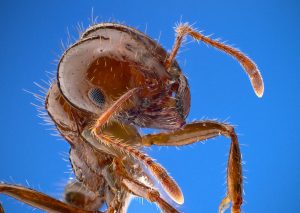 Fire ants are an invasive species of ant that are spreading throughout the United States. They do better in warmer climates, so they tend to be found in the southern parts of the United States more than the northern parts. They can be found from California to Florida and are pushing a bit more north every year.
Fire ants are an invasive species of ant that are spreading throughout the United States. They do better in warmer climates, so they tend to be found in the southern parts of the United States more than the northern parts. They can be found from California to Florida and are pushing a bit more north every year. Fire Ants in Virginia Beach
Fire ants have been reported around Roanoke and Richmond and in areas near Virginia Beach. They are growing more each year and may be an issue in your yard. Fire ant colonies can be quite extensive with large tunneling systems. They have been an issue in Virginia Beach and the Hampton Roads area. It is important to understand the threats that fire ants can pose.
Dangers of Fire Ants
The biggest danger of fire ants is there bite, which stings. When fire ants bite, it will leave a large welt. Often people are bitten by several fire ants at nearly the same time, and when they are disturbed, many fire ants will attack at once. Fire ant bites can cause a serious allergic reaction in some people. They will also attack and eat small animals. People who have been bitten by a fire ant never forget how strong the sting is. It can take a while for the stinging to go away and then bite can be painful for a while.
Spotting Fire Ants
Usually you will see the fire ant mounds before you see the ants themselves. The mounds can be quite large almost, a foot hide and about eighteen inches in diameter. They will start out smaller and look like sandy piles. Fire ant mounds do not have holes in the top of them. Fire ants are reddish brown and larger than most ants. If you see fire ants, you should steer clear. Be careful of stepping on the mounds. If find the mounds, you should keep your family members clear of the area until you can treat the area.
Treating Fire Ants
Fire ants can be difficult to treat because they will flee the mound you are treating through their extensive tunneling system. They will then build a new colony and mounds somewhere else in your yard. A professional can be sure to completely eliminate the fire ants for you. In order to eliminate the colony, you need to be sure to kill the queen and be sure that you treat all the possible mounds and tunnels that they have created.
5 Questions About Wood Rot
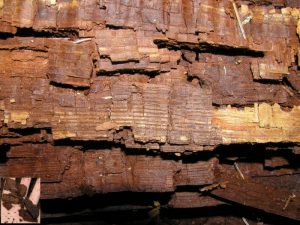 Wood rot is a common problem, especially in older homes. It can occur in almost any home, and there are certain things that make it easier for wood rot to occur. If you have an older home, or if you have had a flood in your home, it is important to keep an eye out for wood rot and to check periodically for signs of wood rot.
Wood rot is a common problem, especially in older homes. It can occur in almost any home, and there are certain things that make it easier for wood rot to occur. If you have an older home, or if you have had a flood in your home, it is important to keep an eye out for wood rot and to check periodically for signs of wood rot.What Is Wood Rot?
Wood rot is caused by fungus that will grow on your wood and weaken it. It happens when the wood becomes wet and your home is warm. It is common in areas that are usually damp, and your crawlspace may be one area that has an issue with wood rot. You may also face issues in your bathroom or eve in your attic if you have had a leak in your ceiling. It is vital that if you have a burst pipe or flood from a rainstorm that you make sure everything dries out completely as quickly as possible to make sure that you do not end up with wood rot.
How Do I Identify Wood Rot?
You may see the fungus growing on the wood itself. You can also check the wood. If it is spongy or soft and darker than the other wood, this is a sign. If the wood has dried out completely, it will be crumbly and crack easily when you test it.
Where Can Wood Rot Occur?
Wood rot can occur anywhere in your home where wood is. The wood needs to become wet to allow the fungus to grow on it, so bathrooms and kitchen floors are common areas, as is your crawlspace or basement, but it can spread from those areas to other areas in your home.
How Do I Repair Wood Rot?
When dealing with repairing wood rot, you will need to replace the wood that has been affected by wood rot. There are treatments you can apply to the surrounding areas to stop it from spreading. The wood rot weakens the wood and can cause issues with structural integrity of your home, so you need to act quickly to address the issues of wood rot around your home.
How Can I Prevent Wood Rot?
Building with wood that is treated against wood rot can make a difference. The most important thing you can do is to keep the wood dry, which means making sure your crawlspace is dry and climate controlled. You also need to act quickly after a flood to clean up and make sure everything dries out completely.
5 Frequently Asked Questions About Bed Bugs
 Bed bugs are a growing problem throughout the United States. Since they were eradicated in the United States for nearly fifty years, many people are not sure on how to treat them and how to avoid getting them. With the increase in travel both in the country and internationally, bed bugs are spreading throughout the country. Here are five questions people ask about bed bugs.
Bed bugs are a growing problem throughout the United States. Since they were eradicated in the United States for nearly fifty years, many people are not sure on how to treat them and how to avoid getting them. With the increase in travel both in the country and internationally, bed bugs are spreading throughout the country. Here are five questions people ask about bed bugs.Where Can I Catch Bed Bugs?
Many people will bring bed bugs home with them after a trip. Bed bugs will camp in a hotel room and crawl into your luggage while you are sleeping. Do not put your luggage on the floor of the hotel or on furniture. You can also bring them home from the gym, from school or anywhere where you may put your bag down and they can crawl into it. They have invaded schools and public buildings in some areas.
Do Bed Bugs Make People Sick?
While bed bugs do bite you and drink your blood, they do not transmit diseases to people. They can carry some diseases, but there are no known cases of them spreading an illness to a person. Some people can have an allergic reaction to the bed bugs. The bites can be extremely itchy.
How Do You Treat Bed Bugs?
There are a few different ways to treat bed bugs. However, bed bugs are resistant to some treatments. They also need to have the treatment applied directly on them. This can make treating bed bugs on your own tricky because they will hide in very small cracks that you may not see. You will need to wash your sheets in hot water and seal your mattress in a mattress cover designed for bed bugs.
Can I Get Rid of Bed Bugs on My Own?
While you may try to treat bed bugs on your own, it is more effective to hire a professional that has been trained in where to look for bed bugs and the best way to treat for them. They can usually treat them in just one bed bug treatment. This can give you peace of mind and the protection from these pests. The professionals have access to more effective pest control products that are safer for your family.
How Do I Find Bed Bugs?
You may notice small bites in rows as one of the signs of bed bugs. You may also see bloodstains on your sheets. You can look for the bed bugs on your mattress and box springs. They will hide in your headboard, nearby furniture and cracks in your baseboards. They are very small and can fit in areas where you do not think that they could feet.
Why Is My Home So Humid?
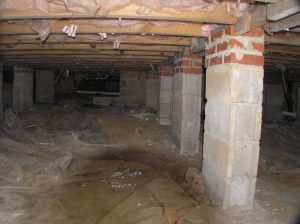
Living in a humid home can be frustrating. It allows mold to grow on your walls. It can cause issues with your comfort level and make your heating or air conditioning systems to work harder. There are a few areas that you need to consider and possible solutions to address your home if it is humid.
Use Your Ventilation Fans
Turning on the fans in your bathroom and over your stove can help remove the humid air from your home. This will protect those rooms from possible mold growth. It is a simple solution for areas that are often temporarily humid from hot water running.
Examine Your Crawlspace
Your crawlspace may be contributing to your home’s humidity, especially if water is draining into it after a storm and it does not have a place to go. It is important to address this by encapsulating your crawlspace to prevent other complications like mold growth or wood rot. If you hate going into your crawlspace because it is also humid and hot, it is a sign that you need to address this.
Address Your Basement
If you have a basement instead of a crawlspace, it may also be an issue. You will need to make sure that the area is completely sealed off. The outside of your basement needs to be waterproofed. You will need to repair any cracks in your foundation. You may need to install a French drain or a sump pump to help with drainage during a bad rainstorm.
Consider a Dehumidifier
Another option to help with humidity is install a dehumidifier. This machine will take the moisture out of the air of your home. You may consider installing one that will help with your entire house. You may also consider putting one in your crawlspace if that is an area that seems to always be humid even after you have encapsulated your crawlspace.
Wrap Your Pipes
Wrapping your pipes can stop the air from condensing on colder pipes or air conditioning vents. This can make a big different in how much moisture collects in these areas which can also help prevent mold from growing in your home, as well as prevent wood rot. Wrapping your water heater can also help, and it can also help to lower your electric bill.
Run Your Air Conditioner
If you live in a naturally humid area, there may be days in the spring and fall where you do not need to run your HVAC system, but if you keep it on, it will work to draw the humidity out of the air. If you just have it cycle a few times during the day it should make a different in your home’s overall humidity level.
The Best Ways to Prevent Rodents
 Rodents are a nightmare for any homeowner. It is a hassle to trap rodents if they get into your home, not to mention the extensive cleanup process that follows. They can also spread disease and may bite your family members. The best thing you can do is to take the steps to help prevent rodents from getting in your home. Here are some things you can do to prevent rodents from getting in your home.
Rodents are a nightmare for any homeowner. It is a hassle to trap rodents if they get into your home, not to mention the extensive cleanup process that follows. They can also spread disease and may bite your family members. The best thing you can do is to take the steps to help prevent rodents from getting in your home. Here are some things you can do to prevent rodents from getting in your home.Prevent Rodents by Keeping Your Home Clean
Rodents are attracted to smells and readily available food. If you have a teenager that loves to leave food in their room or in the family room, you may be attracting the rodents into your home without realizing it. Doing the dishes each night and taking out the trash can help. Keeping your food stored in airtight containers and keeping your home free from clutter will also help prevent rodents from setting up a nest in your home.
Prevent Rodents by Repairing Your Home
Rodents are opportunistic. They will take advantage of any weak areas in your home and work to find their way in. Be sure that you regularly check the areas where the pipes and drains come into your home, as this is often an easy access point. Your crawlspace and along your foundation can also give access as well as your roof and under the eaves. If you see weak wood or holes repair them to stop the rodents from coming in.
Prevent Rodents by Addressing Your Property
Taking care of your property can help prevent rodents from finding their way into your home. If you have a lot of junk on your property, there are more places for them to hide. If you allow your lawn to become overgrown, you can also increase the chances of rodents hiding in the grass and then moving into your home as the weather becomes cold. If you keep the trees and bushes trimmed away from your home, you make it more difficult for the rodents to get into your home.
Prevent Rodents by Covering Your Trash
It is important to make sure the trash stored outside of your home is covered and sealed tightly. Open trash cans or overflowing trash cans attract animals and rodents. Once they are on your property, they are more likely to move into your home and cause issues there. Keeping the cans closed tightly can make a big difference overall.
What Is Crawlspace Encapsulation?
What Happens During Crawlspace Encapsulation?
Crawlspace encapsulation is the process that seals off your crawlspace from the elements. It is a process that can have a variety of benefits for your home including lowering your cooling and heating bills and it can make your home healthier as it can address issues with the cleanliness of the air.
The entire crawlspace is sealed off. The ground underneath the crawlspace is sealed off with a liner. It will go up to the wood of the home. If you have batting siding, it is usually replaced with board siding. This is helpful because it is more mold resistant. It can also do a better job of keeping your floorboards warm. The ductwork is changed so that the air from your air conditioner is now circulated throughout the crawlspace. This helps your air conditioner and furnace to work more efficiently since the outside air will not affect the system. The vents into the crawlspace are sealed off, and a special door is installed that will seal the space completely.
Why Should I Consider This?
There are many reasons why crawlspace encapsulation is a good option. It can improve your air quality. A crawlspace that is not sealed off can become humid and it can cause the wood to rot, it can also cause issues with allowing old to grow which will affect the air inside of your home. This can also give your home an extra layer of protection against insects like termites or other pests that may invade your home. It keeps the wood in your crawlspace dry and away from the insects.
Can I Do This Project on My Own?
There are a number of different steps that you will need to take and changes that you will need to make to a number of systems. It can take time, and if you miss one step or miss sealing one item, all your hard work may be for nothing. It is better to allow the professionals to take care of it for you. They can do it more quickly and make sure that everything is done correctly. They can address all the issues including possible drainage issues in the crawlspace that you may not recognize on your own. Although you may think that this is a costly project, it will save you money in your heating and cooling bills and in possible termite extermination and other repairs that can happen when your home is not properly cared for.
Thursday, April 5, 2018
How to Help Your Property Recover from Termites
 Many homeowners feel panic when they first suspect that they may have termites. Then a feeling of dread may settle in once that is confirmed after an inspection. A termite infestation affects your ability to your sell your home, and it can reduce your property value until the repairs are completed. Here are the steps you need to take to help your property completely recover from a termite infestation.
Many homeowners feel panic when they first suspect that they may have termites. Then a feeling of dread may settle in once that is confirmed after an inspection. A termite infestation affects your ability to your sell your home, and it can reduce your property value until the repairs are completed. Here are the steps you need to take to help your property completely recover from a termite infestation.Treat Your Home for Termites
The first step is treat the termite infestation and get rid of the termites. The sooner you have the termites treated, the less damage that they can do to your property. While many people try to treat for insect infestations themselves, when it comes to termites, it is best to use a professional. They can correctly apply the treatments and make sure that the termites do not return. Termite control treatments usually come with a warranty, which protects you against future termite infestations.
Make the Repairs
While you may want to delay making the repairs because of the cost to do so, it is important to make the repairs right away. The repairs may have made your home structurally unsound. You will need to make these repairs to keep your family safe from the damage. While you may not have significant structural damage to your home, you should still make the repairs. The damaged wood will give easy access to other insects and animals that may try to come into your home. It is important to make those repairs correctly and right away. While you may be tempted to make the repairs yourself, there are proper ways to make those repairs to keep your home safe, and having a professional may be the best option.
Prevent Future Infestations
Take the time to examine your home for signs of weakness. Be sure that the roof is in good repair and that any vents are covered with grates that will keep termites out. Check your crawlspace to see if it can be improved by keeping it dry and sealed off. You can also check your property to see if there is any wood around the property that may attract the termites.
Set Up a Continued Monitoring System
It is important to have a continued monitoring system for termites. This can be done around your property. You should continue to have regular inspections and treatments done in the future to prevent termites from being an issue again.
5 Commonly Asked Questions About Termites
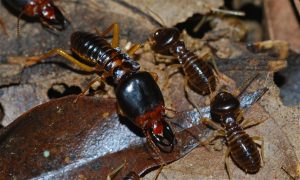 Termites are a large problem throughout the world. While they perform a necessary part in breaking down the dead wood that may be underground or around a forest and turning it into soil, they can also do significant damage to your home in a relatively short period of time. Here are some answers to commonly asked questions.
Termites are a large problem throughout the world. While they perform a necessary part in breaking down the dead wood that may be underground or around a forest and turning it into soil, they can also do significant damage to your home in a relatively short period of time. Here are some answers to commonly asked questions.Can Termites Hurt People?
Termites will feed on wood. They avoid light and will spend their time underground. Termites focus the most on their colonies and their roles within it. The solider termites that are designed to protect the colony may bite you if you are hassling them in some way, but it is not a very common occurrence. For the most part, termites will leave you alone as they just want to remain undetected as they feed on your home.
Can I Treat Termites on My Own?
While you may be able to find methods of treatment throughout the internet that suggest using vinegar soaked cardboard or other methods, it really is best to turn to the professionals for treatments. This is because of the extensive damage that termites can cause to your home and make it unsafe for you and your family. However, you can focus on preventing termites in your yard and around your home by clearing out dead wood on your property and keeping the trees and bushes from touching your home. You can also avoid using mulch around your property.
Do Termites Fly?
Termites will fly when they swarm. This happens when some of the termites leave to establish a new colony. Generally, termites will swarm in the spring. If you see flying termites around your property or in your home, you likely have an established colony on your property. If you see piles of discarded wings, you likely have a newly established colony. Either way you should schedule a termite inspection to make sure that you do not have an issue in the future.
Do I Really Need a Termite Inspection?
You should schedule an annual termite inspection or set up a termite monitoring system around your property. This allows you to catch termite activity before it become s too serious. The inspector will look at common areas where termites first start to attract your home, like your attic, crawlspace or basement. The inspectors are trained to look below the surface and to catch any activity so that you can begin treatment. You can watch for signs of termites like mud tubes, damaged wood around your property or in your home or discarded wings as well.
How Much Damage Do Termites Really Do to Your Home?
One termite colony can eat through your entire home in just two years. While this may seem like a slow process, it is important to realize that the damages that make your home unsafe like weakened floor joists, can actually happen much more quickly. Another thing to consider is that many people find that they have more than one colony on their property. Termites can damage the floor joists, floor boards, supporting beams and any area that is wood. Dampwood termites will eat the protective casings around electrical wires and can create a serious fire hazard. This damage can affect your property value until it is addressed and repaired.
What Is the Most Common Type of Termite in Virginia?
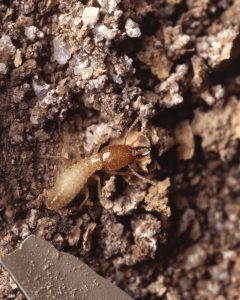 There are three basic types of termites, and there are different steps that you can take to protect your home from those types of termites. It helps to know what the primary types of termites that you will need to worry about in and around your property. In Virginia, the most common type of termite is the Eastern Subterranean termite.
There are three basic types of termites, and there are different steps that you can take to protect your home from those types of termites. It helps to know what the primary types of termites that you will need to worry about in and around your property. In Virginia, the most common type of termite is the Eastern Subterranean termite.Eastern Subterranean Termites
The Eastern Subterranean termite is spread throughout the Eastern part of the United States. These termites live underground in colonies and the termites will crawl up into the wood to feed. They will build mud tubes to protect themselves as they crawl up into your home. There three different roles in an Eastern Subterranean termite colony. The workers will focus on getting the wood to feed the colonies, the soldiers will protect the other termites, and the queen and kings. These termite colonies can move as they move from food source to food source.
Preventing Subterranean Termites
The best way to prevent these termites from infesting your home is to remove everything that attracts them to your yard. This means clearing out old wood like fallen trees or branches. You may also want to clear out old tree stumps. Clearing out leaf debris can also help. Be sure that you do not use wood mulch near your home, since the termites will eat that. You should also be sure that you only use treated wood in the building projects around your home.
You should also be sure that your home is in good repair. Leaks can make your wood wet, which is how termite prefer it. You should be sure that the wood dries out completely. Check your foundation periodically for cracks, which can give termites easy access to your home. You should also check for mud tubes along the foundation, which is a sign that you already have termites in the home.
What Other Types of Termites Can Damage My Home?
There are two other subtypes of termites. Dampwood termites like to feed on damp wood. They may come in through your attic. These termites need constant access to moisture and they can actually build their colonies inside of the wood of your home as they eat it. Drywood termites will also live inside the wood of the home. They are more likely to eat through the siding of your home and you can even find them in furniture. Keeping your home in good repair can prevent the termites from finding their way into your home.
5 Cockroaches in Virginia
[caption id="attachment_2000" align="alignright" width="300"]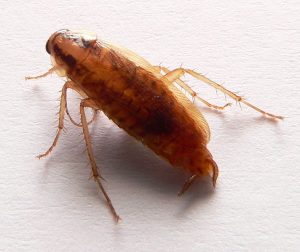 Image courtesy of David Monniaux CC by SA 3.0[/caption]
Image courtesy of David Monniaux CC by SA 3.0[/caption]
Cockroaches can be a serious problem and it only takes a few to start a serious infestation in your home. Once a cockroach wanders in looking for food and water, it can only take a few weeks for it turn into a full-blown insect infestation. Here are five types of cockroaches found in Virginia.
American Cockroaches
The American cockroach is large and grow up to one and half inches long. It can fly. It is also known as the Palmetto bug or water bugs. These roaches are a reddish brown and may have pale marking along the sides. These cockroaches tend to come in your home during the winter or after a rainstorm. The prefer the temperature to be around 84 degrees. American roaches will eat a variety of food including cheese, beer, hair and glue.
Brown-banded Cockroaches
These small cockroaches look similar to German cockroaches, but they have white bands across the body. These cockroaches may be found in your home. These cockroaches do not need as much water and so they will spread out into your living room and bedrooms. They will feed on a wide variety of things including trash and even nylon. When they invade your home, they can live for up to 206 days.
German Cockroaches
German cockroaches are light brown and small. They are different from brown-banded cockroaches because they have distinct dark parallel streaks that run down the back starting at the head and moving down to the base of the wings. German cockroaches will not survive outside and need warm weather. They are usually found in homes, restaurants or institutions like nursing homes. The German cockroach reproduces the most rapidly out any cockroach and likes sweet, fatty foods, starches and meats. They will eat glue or toothpaste if other food is not available.
Oriental Cockroaches
Oriental cockroaches are another common cockroach found inside homes. These are darker in color than German cockroaches and can be dark brown to almost black. They prefer areas that are damp and can be found around pipes that leak and in sewers. They move more slowly than other cockroaches but can prove difficult to kill since they may wash the insecticide off when they travel through water.
Wood Roaches
Wood roaches are unlike the other cockroaches listed. While they are the most common roaches in Virginia, they primarily live outside. It is not easy for a colony to be established inside of your home, and so you usually do not need to treat for these roaches. You can find wood roaches around heavily wooded areas. These roaches will fly, and have a white margin just behind their head.
The experts at EcoTek can help you correctly identify and treat any cockroaches that you may have in your home. It is important to work quickly to eliminate any roaches to prevent a true infestation taking hold.
5 Things That Attract Termites to Your Home and Property
[caption id="attachment_2306" align="alignright" width="300"]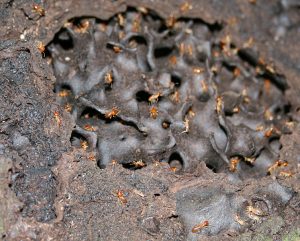 Image courtesy of Gavinevans CC by SA 3.0[/caption]
Image courtesy of Gavinevans CC by SA 3.0[/caption]
If you are concerned about termites, you may be wondering what you can do to protect your home from the invasion of termites. Termites serve an important part in the ecosystem. They help to break trees and wood back into soil. Even though termites are necessary, that does not mean that you want them attacking your home or being active on your property. Here are five thing that attract termites to your property.
Old Decaying Trees
Termites like to feed on old, dead wood. If you have decaying trees on your property, even in the back corners, you are inviting termites to come to your property by offering them up a meal. It is important to clear out old decaying trees. You should also address trees that may not be well and in the process of dying because some types of termites will feed on sick trees as well. Be sure to remove any limbs or falling trees.
Mulch
Wood mulch may be a good thing to help keep the moisture around your flower beds. It can also help your yard look nicer, but wood mulch can attract termites to your property. You should never use it in the beds that directly touch your home, but you may also want to consider other materials in your flower beds including a rubber mulch or a cedar mulch. There are a number of different materials you can use.
Wooden Structures Including Your Deck
The outbuildings, deck and fencing around your yard can all attract termites to your yard. The solution is to build these structures out of wood that is specially treated to not attract termites. Treated wood can last up to forty years, but you will need to check on it periodically. If you have structures that are not built of treated wood you will need to replace them.
Moist Wood in Your Crawlspace or Basement
Termites like wood that is wet or moist. If your crawlspace is hot or humid and if you dread going in them because of the way it feels or smells, it is likely that it would naturally attract termites as the floor joists and subfloor are weakened from the moisture. The best way to address this issue is to encapsulate the crawlspace and make sure that it is sealed completely from the elements.
Firewood
Firewood naturally attracts termites. While you may want to have firewood on your property to help you save money on your heating bill, there are steps you can take to protect your home from termites, and your firewood. Be sure to store it away from your home, not against it. You should store it on a concrete slab, and you should keep it covered to prevent termites.
5 Home Maintenance Projects to Protect Yourself from Termites
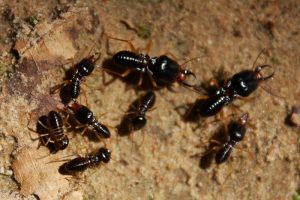
Termites can cause thousands of dollars to your home in a very short period of time. Termites will steadily eat through the wood of your home all while remaining hidden. It is important to regularly have your home inspected for termites, but there are projects you can do to your home that can help protect it from termites. These steps can help you prevent the termites from coming into your home.
Check Your Ventilation to Make Sure It Is Working
Many termites prefer damp wood and so making sure that your home stays dry and the ventilation system is working properly is important. You should take time each year to make sure that all the ventilation in your attic and other areas of your home is open and unblocked. When you check this system, you should also check to make sure that each of the vents have a grate installed that will keep swarming termites and other insects out of your home.
Fix Your Crawlspace
Your crawlspace may be the perfect place for termites to enter your home. If you dread going into your crawlspace because it is hot and humid and full of mud and puddles, then you definitely need to address this. The humidity in the crawlspace can allow the wood to become damp which makes it more attractive to termites. If the ground is not covered with plastic and sealed, it makes it easier for subterranean treatments to be installed. While past practices were to allow your crawlspace to vent to the exterior, most people now recommend encapsulating your crawlspace and sealing it off so that the HVAC system is safer. It also makes the home in your house cleaner and safer to breath.
Check and Repair Your Roof
Loose shingles can give termites easy access to your attic where they can set up shop without ever realizing that there is a problem. Take time each year to check out your roof and to be sure that the shingles are in good condition. If you find one or two that are loose you can repair them or you may want to hire someone to do it for you. While you are up there, be sure to check around the vents to make sure that they are sealed.
Check Pipes for Leaks Periodically
Leaky pipes allow moisture to weaken the wood in your home. The damp wood is the food that termites prefer to feed on. You should periodically check the pipes in your home to make sure that you do not have any leaks. If you do find a leak or if your home has a flood, you will need to make sure that the wood dries out completely as quickly as possible. You can set up fans throughout the room to aid with it. You should check the wood once it is dry to make sure it is still strong and that it does not need to be replaced.
Close Holes into Your Home
Take time to check around your foundation, and any areas where a pipe or wiring enters your home to be sure that they are sealed off completely. Termites can enter through any small opening and explore your home looking for a meal, making sure these areas are sealed will protect your home from termites and other insects. It can also help with the energy efficiency of your home.
Preparing to Sell Your Home After a Termite Infestation

When you learn that you have termites, you may be wondering how it will affect your ability to sell your home in the future. You may have taken care of the problem and tried to put it out of your mind, but now that it is time to sell, you will need to take a few extra steps to be sure that the sale of your home goes smoothly. Under law you must disclose that your home has had termites in the past, but there are things you can do to help things go smoothly when you are selling.
Show Documentation of the Original Treatment and Findings
You need to keep copies of the initial inspection that showed the termite activity, as well as the treatment that was completed to eliminate the termites. This report can answer questions about the type of treatment that was used, and how extensive the termite damage was to the home. This gives your potential buyer a clear understanding of what the issues were.
Be Prepared to Show Evidence of Repairs
It is important to provide documentation of the repairs that were made. It should show that all of the damage in the initial report was taken care of. You can provide the name of contractor or company that completed the repairs. This gives another layer of transparency which will help your buyer to feel more comfortable about buying the home.
Explain Monitoring and Further Treatments
As part of the treatment, you will receive information on how long the termite treatment will last. You will also need to have continued monitoring done of your property to make sure there are no issues in the future. It is a good to have regular inspections done on your home. Depending on the type of treatment that you had done, you may need continued termite control treatments. You should provide the type of treatment, and you should also give the name of the company that you used to complete this service. Many new home buyers will continue to use the same company, especially if the warranties from the initial treatment carry over.
Schedule a New Inspection
You should schedule an inspection as part of preparing to sell your home. This report will report on any current activity in your home by termites or other wood destroying organisms. If you have had regular treatments and inspections since your original treatment then this report should not show any problems. If it does show an issue, then you will need to have another treatment, and make any necessary repairs.
What Are the Types of Termite Treatments?
There are several different termite control treatments that can be done to help treat and prevent termites. The type of treatment that is best for you depends on the situation and what types of termites that you have. You should seek a professional opinion and listen to your exterminator to determine the best treatment. However, it is a good idea to understand the basic treatments.
Wood Treatment
One of the treatments is to treat the wood. This is done by spraying the wood with a termiticide. This treatment is good at treating the exterior of the wood, and it can be done on wood that is already in an existing structure as a way to eliminate termites. However, it does not penetrate to the center of the wood, which can still be eaten by termites. Pressure treated wood has the treatment saturate the wood more completely. Pressure treated wood is good to use in outdoor structures like your patio or your fence.
Soil Treatment
Another way to provide a treatment is to treat the soil around your home. Soil treatment is often completed before a concrete slab is poured for a new building. This treatment is mixed and then poured into the ground at a depth of at least thirty inches. The insecticide is mixed with water and it saturates the soil. There is also the option of treating the soil around the exterior of your home once it is built. The treatment will be poured into holes and through a trench that surrounds the home. The holes need to be at least thirty inches deep. There are specific regulations about doing this to protect the environment and it is best to have a professional do it.
Foundation Treatment
This is a very common treatment. Once termites are found in your home, a treatment is applied directly to the foundation of your home. The treatment is effective because termites will pass through it and carry it back to the colony and it will eliminate the queen and then the colony. If the foundation is a cinder block foundation, the treatment needs to be applied on the inside of each void or hole in the cinder block. This does require drilling into it.
Baits and Monitoring System
The final treatment is done through a monitoring system that installs baits around the property. The baits contain materials that naturally attract the termites. These stations are monitored regularly. If termites are found inside the stations, the cores are replaced with one that contains termiticide. The termites will take this back to the colony and eliminate the colony on your property so that it does not reach you home.
Schedule an Inspection
One of the best ways to protect your home is to schedule regular termite inspections. You should schedule an inspection each year. If you notice signs of termite activity like mud tubes along your foundation, you should schedule an inspection right away. The sooner you catch a termite infestation, the more quickly you can stop the termites from damaging your home.
Saturday, March 24, 2018
Protecting Yourself and Your Family from Bed Bugs in Fairfax County
 With recent reports in the news of bed bugs in public buildings, like schools, in the greater D.C. area, you may be wondering what you can do to protect your family and your home from bed bugs. While bed bugs were nearly eradicated in the 1960s, they have made a huge comeback in recent years. The bed bugs themselves do not spread disease, but they can cause other problems including allergic reactions. Add that to the fact that they are hard to treat and exterminate, and you can understand why it is important to avoid getting them completely. A typical bed bug extermination treatment doesn't always eliminate them, and sometimes there needs to be additional treatments.
With recent reports in the news of bed bugs in public buildings, like schools, in the greater D.C. area, you may be wondering what you can do to protect your family and your home from bed bugs. While bed bugs were nearly eradicated in the 1960s, they have made a huge comeback in recent years. The bed bugs themselves do not spread disease, but they can cause other problems including allergic reactions. Add that to the fact that they are hard to treat and exterminate, and you can understand why it is important to avoid getting them completely. A typical bed bug extermination treatment doesn't always eliminate them, and sometimes there needs to be additional treatments.1. Check Before Any Hotel Stay
One of the best ways to protect yourself from getting bed bugs is to complete a throughout check of your hotel room before you stay the night. You should check the bedding to make sure it is free from stains and droppings. Bed bug droppings are small, but will smear a rust color stain if touched. Look behind the headboard to make sure you do not see signs of droppings or the bugs themselves. If your room looks clean, then you should still be careful with your luggage. Never place it directly on the bed or on the floor. Use the luggage rack that is provided in the room.
2. Check Your Luggage Before You Take It Inside
Bed bugs can crawl from one location to another. Be sure to check your luggage for signs of bugs before you leave the hotel room. You should also look for bed bugs again before you take your luggage inside of your home. You can purchase a special suitcase heater that will treat the luggage for bed bugs by heating it up. This can work as an extra precaution after any trips
3. Be Careful with Purse, Briefcase and Backpack
Many bed bugs are being spread in public buildings like schools or municipal buildings. Bed bugs do not travel around on people, but they will crawl into someone’s bag, and then out of it again looking for a new place to call home. Students can bring bed bugs to school in a backpack, and then they will wander out and infest the school or wander into another student’s backpack, especially if the backpacks are stored close together. When you are in a public place try to keep your bag or purse off the floor to reduce the chances of picking up bed bugs. If there are issues at your child’s school, then you may want to stop sending your child with a backpack until the situation is addressed.
4. Rethink Your Gym Bag
Gyms are another common area to pick up bed bugs without realizing it. Often a person will not realize that they may be spreading bed bugs when they take their bag to the gym. The bed bugs can get out and wander around the locker room looking for a new place to hide. If they wander into your gym bag, then you may end up taking the bugs home with you. If possible, you may want to consider changing and showering at home. If this is not feasible with your schedule, be sure to check your bag carefully for bed bugs before putting it in your car or taking it home.
Friday, March 23, 2018
How Can I Stop Rodents from Getting in My Home?

Rodents can quickly damage your home and they spread a number of serious illnesses including hantavirus. It is very stressful to realize that you have rodents in your home leaving trails of droppings and urine as they scamper through your kitchen in search of food. They are expert climbers and can get into almost any space. It is important to take steps to prevent rodents from getting in your home.
Check for Holes Around Your Foundation
Periodically check your home for places where rodents can find their way into your home. If you see signs of holes or chewing, you should take the steps necessary to fix the holes. This could mean replacing wood or it could mean installing exclusion barriers in those spaces. If you have damage from other pests like termites, rodents will take advantage of these weaknesses to work their way into your home, so you should make those repairs correctly.
Look in Your Attic and Under Your Eaves
Another area that rodents will get into your home is through your roof or under your eaves. They can walk across electrical wires or climb on trees and drop onto your roof. You should check your roof for loose shingles or areas that the rodents can easily get in and make the necessary repairs. Check under the eaves too. Be sure that grates are installed over each the vents to keep rodents out.
Trim Back Tree Branches
Tree branches that hang over your home or brush up against the side of your home can provide another access point for rodents to get into your home. Trimming back any bushes or trees will provide the extra protection against rodents and other insects.
Check Areas Where Pipes Enter Your Home
Rodents will come in through any area where there is a space or weakened wood. The areas around the pipes can be weakened if there is a leak in the area. You can install exclusion barriers or replace wood that is weak or rotting to keep rodents out of your home.
Keep Your Home Clean
Rodents are attracted by strong smells, and they can more easily set up house in a home that is cluttered and not as clean. Cutting down on the clutter and taking out the trash each night can reduce the chances of getting rodents. Be sure to do your dishes each night and to store all your food in airtight containers. These steps can cut back on the smells in your home and make your home less attractive to rodents.
Monday, March 5, 2018
How to Protect Your Pets from Fleas and Ticks
 https://www.pexels.com/photo/black-and-brown-short-haired-puppy-in-cup-39317/
https://www.pexels.com/photo/black-and-brown-short-haired-puppy-in-cup-39317/Seeing your furry friends uncomfortable and irritated because of fleas and ticks will surely ruin your day. Don’t let this issue get out of hand- take these simple steps today.
Pay attention to your pets all the time
Many people believe that fleas are only a problem on hot summer days, but this isn’t totally correct. According to many experts, certain types of fleas and ticks can breed and suck animals’ blood even in winter. That is why vets highly recommend year-round defensive measures for your vulnerable pets. Nowadays, there are many different products available to use against fleas, and pet owners have hundreds of choices. Don’t use cats’ products for dogs and vice versa, because “one man’s meat is another man’s poison”. Most importantly, ask your vet for advice and strictly follow the instructions for the best efficiency and safety. If you don’t see any results, try another brand until you find one that works. Lastly, remember to check the expiration date on the packaging.
Clean your pets regularly
 https://pxhere.com/en/photo/1055567
https://pxhere.com/en/photo/1055567Combing and bathing your animals frequently allows you to identify a flea infestation as soon as possible, and will give you time to find out about solutions to treat it. This step is even more important when you have just walked the dog. Always do a comb through afterwards to check for fleas and ticks. When you see even one single flea or tick, then it’s time to give your pet a warm, soapy bath. Afterwards, apply some natural repellents such as mint or lemon essential oil to keep parasites away.
Defend your home
All your efforts with your pets may be for nothing if you ignore your own home. Hygiene is the most effective way to keep your living space flea-free. Cleanliness prevents ticks and fleas from finishing their life cycle. Pay attention to any areas that your pets have contact with, such as your mattress, bed and carpets. Tick and flea larvae like these places because they are dark and they can hide away undisturbed. Although fleas may have not yet have appeared in your house, it will only be a matter of time before any developing eggs will hatch. The solution is to vacuum carpets, mattresses, and furniture regularly, and to wash bedding frequently. When you vacuum, pay special attention to any hard-to-reach corners. In addition, bear in mind that fleas can jump into your house via the windows or a balcony. To prevent this, plant some containers with mint in them or install glass screens to avoid this situation.
Protect your garden
 http://maxpixel.freegreatpicture.com/Spaniel-Animal-Dog-Portrait-Garden-Canine-2862040
http://maxpixel.freegreatpicture.com/Spaniel-Animal-Dog-Portrait-Garden-Canine-2862040On a sunny spring or summer day, nobody wants to miss out on a chance to sunbathe in their beautiful garden. Unfortunately, however, most gardens are full of favorable conditions for fleas and ticks to hide and breed. There’s no way of keeping your garden completely flea-free, but you can keep them away from your pets. Firstly, don’t let your lawn get too long. Fleas hate to be exposed to sunlight, therefore, keep your grass short and don’t hesitate to prune your trees and let more sunlight through. Secondly, put up a wall or fence to minimize the risk of your pets coming into contact with other strange animals. Just one unexpected guest can become the cause of a serious flea infestation. Thirdly, never allow your garden to become messy with a lot of rubbish like rotten leaves, bottles, overgrown shrubs, or other debris. Last but not least, grow different kinds of mint in the area close to your house to repel fleas. We are sure that they will move as far away as possible to avoid the offensive fragrance.
To sum up
We hope that you have now learned some useful tips on how to protect your pets, your home and your family. Keep your eyes on your pets themselves, as well as both the inside and outside of your house. Apply these useful tips and you should never have to worry about flea infestations.
Monday, February 26, 2018
A Comprehensive Guide to Getting Rid of Fleas in Your House

Fleas are tiny, dark brown insects. They have no wings, but possess strong legs that enable them to jump incredibly far. They often reside in places which are sheltered from direct sunlight. Animals with furry coats are ideal hosts for fleas. Pets that live in your garden are likely to struggle with flea infestations. Fleas can easily be carried into your house by your pets. Once fleas have entered your home, you must take action. A simple search on the internet will reveal numerous ways to deal with fleas. We’ve made this easier for you by giving you a comprehensive guide to getting rid of fleas.
Treating Flea-Infested Pets

In order to eliminate all fleas, you must promptly address the source of the fleas. This is most likely your pets. Dogs and cats are especially prone to flea infestations . There is no use in killing fleas in carpets and sofas while fleas are still being carried inside by your pets. Look for flea-control products for pets, such as flea combs, flea shampoos and flea sprays. After treating your pets, you should keep them away from flea-infested areas.
Cleaning Your House
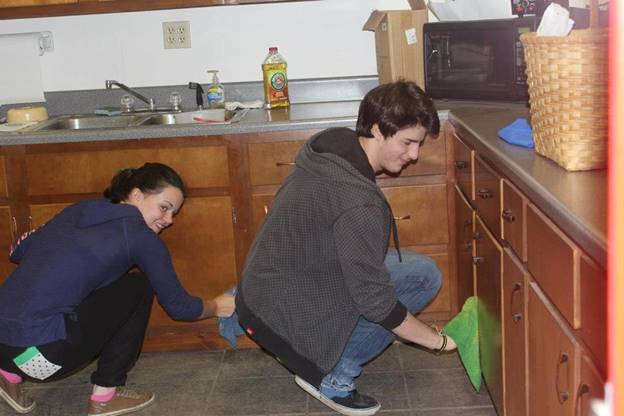
Re-organize things like boxes, shoes and papers to clear the floor. This will make cleaning and vacuuming easier. Gather together removable items such as carpets, rugs, pillows, mats, cushions and pet bedding. Wash or dry clean these items at a high temperature. Use the vacuum cleaner to target hidden corners and carpets. Sprinkle some salt or baking soda on the carpet before thoroughly vacuuming it. Once vacuuming is complete, seal the vacuum bag and throw it away. This will prevent flea eggs and larvae from growing into adults and re-infest the house.
Flea Foggers
If your house is heavily infested, chemical products such as flea bombs and flea foggers should be used. These contain a kind of chemical pesticide, so it is best to keep children and pets far away from the treated areas. Instructions on how to apply the flea fogger should be read carefully. Protect yourself with gloves, a mask, and protective clothes. Furniture and obstacles should be cleared prior to fogging, so that all corners of the room are fogged. Leave the house after using the flea fogger for about 8 hours before cleaning and vacuuming.
Preventative Measures
Tidy your house and outside areas frequently. Mow the grass, prune shrubs, and clear fallen leaves and debris. Take good care of your pets and keep them clean. You could also consider planting herbal shrubs, such as peppermint or lavender shrubs, as these repel fleas.
By following these tips, we’re sure that you will be able to eliminate fleas from your home in a short space of time.
How to Get Rid of Fleas with Salt

If your house or pets are suffering from a flea infestation, you may need some help. Flea bites will not only result in terrible itching and pain, but for those with allergies, skin inflammation is inevitable. Fleas are known to be carriers of several serious diseases, such as typhus, tapeworm, and even plague. This is a cause for great concern if fleas are in your home. There are a number of ways to effectively get rid of fleas. However, natural, non-toxic methods are often preferable to chemical treatments. Salt is both a budget-friendly and effective solution to your flea problem. If you still have some doubts about salt as a flea-eradicator, keep reading!
How Salt Kills Fleas

Fleas flourish in moist places, while salt possesses the ability to eliminate moisture. When fleas come into contact with salt, the outer layer of their bodies becomes dry and vulnerable. A treatment of salt powder or a mixture of salt and borax is prescribed for killing these pesky fleas. Salt can be used both indoors and outdoors to treat fleas on pets and carpets.
Directions for Use
Grind the salt into a fine powder and sprinkle it on the flea-infested carpet. The fine salt will penetrate deeply into the carpet fibers and kill fleas. You should leave the salt on your carpet for about 24 hours before vacuuming thoroughly. Salt left out for longer than two days might make your carpet dirty. Sprinkle salt by your doorways, so that fleas cannot escape to other rooms or outside while the salt is working its magic. Flea eggs or larvae may not die instantly, but vacuuming will clear them away. Seal the vacuum bag tightly and have it disposed of as soon as you have finished vacuuming. This will prevent eggs and larvae from developing into fleas inside the bag and invading your house.
With regards to pets, a warm salt bath will help to remove the parasites from their bodies. The formula should consist of 1 part of salt mixed with 10 parts of water. Before you bathe your pet in the salt water, you should ensure that the pet has no open wounds. This will prevent unnecessary discomfort. Your pet’s eyes and ears should be shielded from salt water. If your pet is heavily infested, rub salt onto its fur and wait about two hours before rinsing with clean water. You may have to repeat this salt treatment several times to remove all the fleas from your pet’s body.
To sum up
Salt can also be used to kill fleas outside, although this is a less effective method of treatment. Salt treatments certainly stood out when the various methods to kill fleas were explored. Salt is both a non-toxic and budget friendly option. The only things that you need to get the job done are a few cents and a bit of patience!
Tuesday, February 20, 2018
Monday, February 12, 2018
Friday, February 9, 2018
How Do I Get Rid of Cockroaches If I Live in an Apartment?
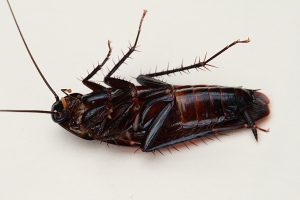
Raleigh has the unfortunate distinction of being ranked sixth in the list of cities with the highest number of roach infestations around the country. Cockroaches tend to thrive in warm, humid climates and they can be difficult to clear up. If you are living in an apartment building, you may have an even harder time to clear up an infestation, as the cockroaches may move from one room to another. Here are some steps you can take.
Contact the Landlord
If you contact the landlord, you can request that the entire building be treated including the crawlspace. Then request that regular exterior treatments be completed. This should clear up any infestations that are currently in your building, and the exterior cockroach treatments can help to prevent any new cockroaches from coming in. If your landlord will only treat one apartment at time, the cockroaches will just move from space to space and continue to be a problem.
Eliminate Food Sources
If you have a clean home, you are less likely to have issues with cockroaches, even if your neighbors are still having issues. Be sure to store your food in airtight containers. Clean up any crumbs left over after eating or preparing a meal. Be sure not to leave any dirty dishes in the sink or out on the counters, especially overnight. Take the trash out every evening. Be sure that your interior trash cans have a tight-fitting lid to prevent the roaches from finding them.
Check the Apartment for Ways for the Roaches to Get In
Cockroaches can live on the interior of the walls. If there are any holes in the walls an electrical cover that is loose or off or cracks around the baseboards, you will need to have them repaired in order to stop the roaches from coming in. You can request the landlord to make the repairs or ask for permission to do them yourself. Check along the windows and doorframes to see if there are cracks. The windows may need to have caulking applied to them. You can apply weather stripping to the door to plug any cracks that may be leading out. Check your kitchen counters to make sure they are flush to the wall. You may need to apply caulking there to stop roaches from living in the spaces between the cabinets and the wall.
Image courtesy of Toby Hudson (CC by -SA 3.0)
How Can I Prevent Termites?
[caption id="attachment_1948" align="alignright" width="300"]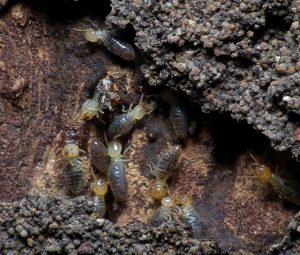 Image courtesy of James Niland (CC by 2.0)[/caption]
Image courtesy of James Niland (CC by 2.0)[/caption]
Termites are a common problem that many homeowners will have to deal with at one point in their lives. Termites move from place to place and expand their colonies. Termites are found throughout the United States, but tend to do less damage where there are cold, dry winters. If you are a homeowner, there are a few steps that you can take to protect your home from a termite infestation.
Consider a Pretreatment Before You Build
Many building companies will complete a pretreatment for termites before they build. This is a soaker type treatment where the termiticide is applied to the ground before the building begins. This provides protection under the concrete slab and around your home. If you are building a home yourself, you can request that the contractors do this before they start building.
Seal Off Your Crawlspace
Many crawlspaces have dirt floors. If you can seal off your crawlspace, you can limit the areas that termites can get into your home. You can hire a professional to do this for you, or you can attempt to do it yourself. The project can be quite time intensive and depending on the current condition of your crawlspace, it may include mucking things out. A professional company will make sure is done correctly and give you the protection that your home needs.
Regular Inspections and Bait Stations
Regular termite monitoring can help you detect termites before they cause a lot of damage. Bait stations can alert you that termites are on your property and allow you to treat for them if it becomes necessary. The bait stations are chemical free, and attract the termites since they contain wood and cellulose. If termites are found in these stations, you can begin treatment.
Use Treated Wood
If you are building a new outdoor project like a deck or shed, be sure to use wood that has been treated for termites, especially if it will go directly into the ground. Subterranean termites will begin to eat the wood of the deck and give you no visible signs unless the wood is treated.
Stack Wood Away from the Home
If you keep wood for a fireplace or wood burning stove, you need to stack the wood away from your home. If you can store it on a concrete pad, you provide another layer of protection for the wood. You can also cover it with a tarp for additional protection.
Image courtesy of James Niland (CC by 2.0)



